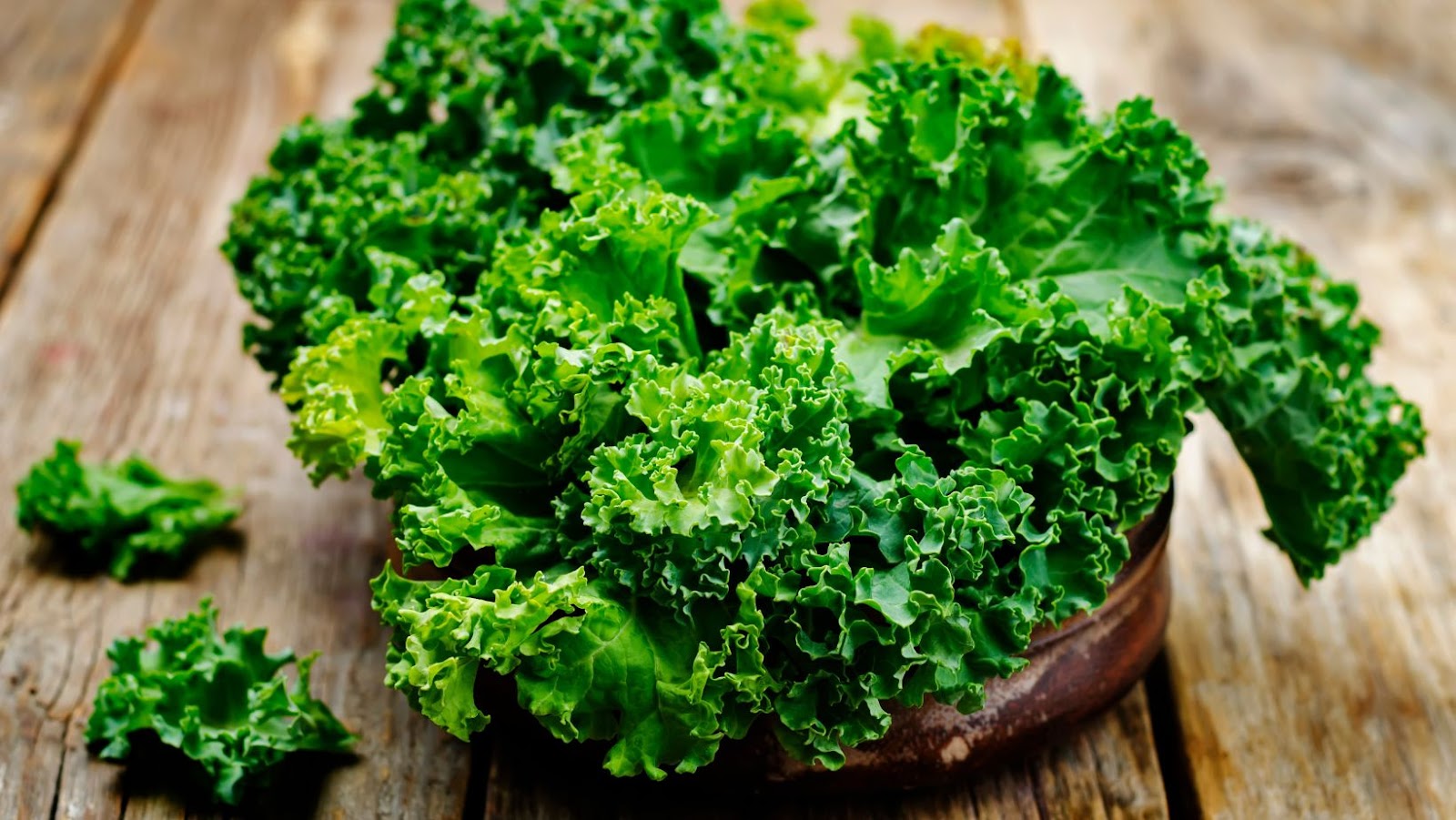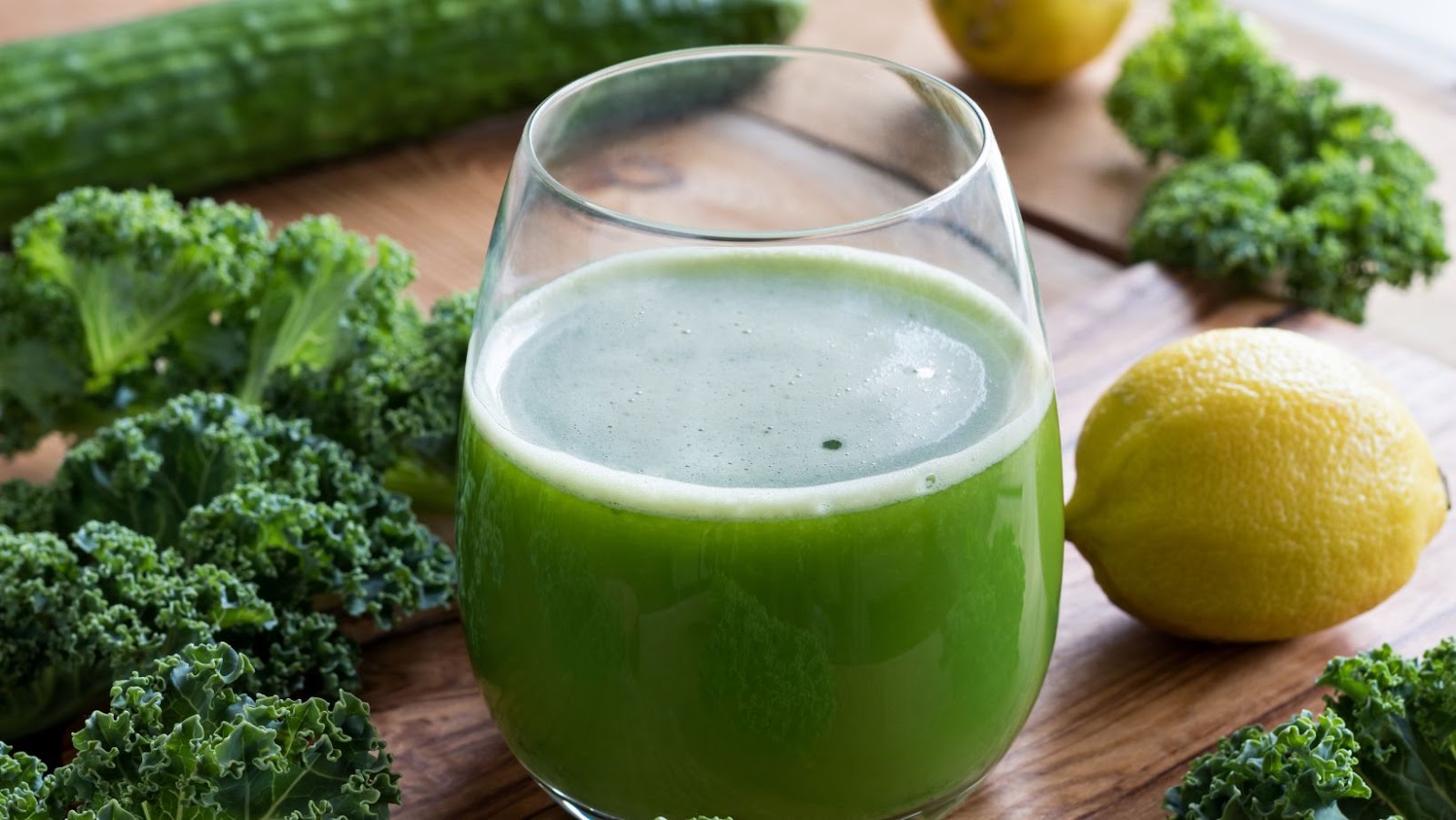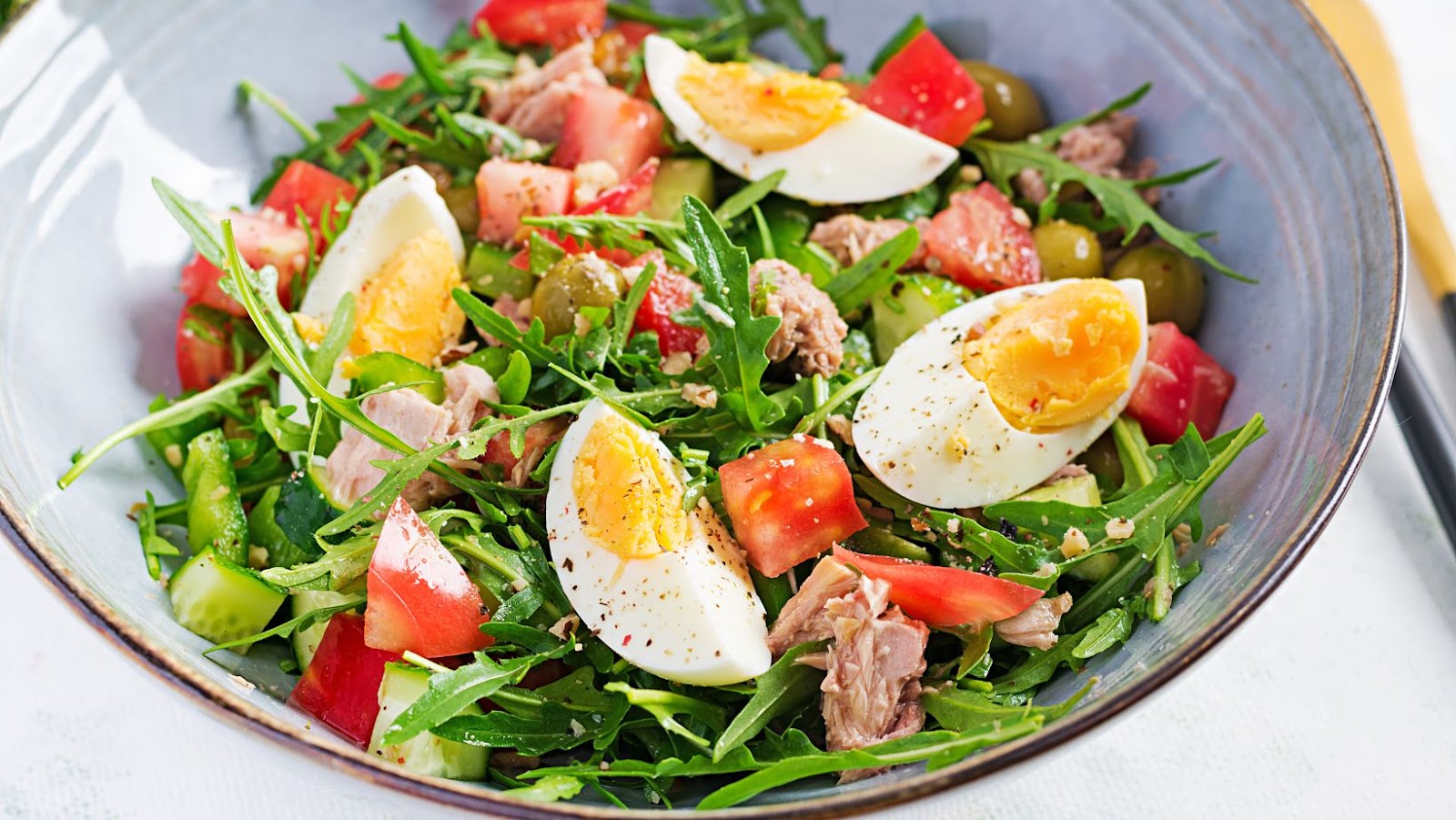To better understand the nutritional benefits of arugula and kale, you can compare the two foods side by side. In order to do this, the section “Nutritional Comparison: Arugula Vs. Kale” with sub-sections “Arugula” and “Kale” provides a solution. This will allow you to see the different vitamins and minerals that each leafy green offers and make an informed decision on which one to incorporate into your diet.
Arugula
When compared to kale, another popular leafy green vegetable, arugula has lower levels of vitamin C and calcium but higher levels of vitamin A and potassium. However, both vegetables offer a wide range of health benefits and are great options for adding more nutrients to your diet.
It’s worth noting that arugula is also incredibly easy to grow at home in the garden or even in a small pot on a windowsill. This makes it a convenient option for those who want fresh produce without having to venture out to the grocery store.
Don’t miss out on the many benefits of arugula! Consider incorporating it into your next meal or growing it yourself for a delicious and nutritious addition to your diet.Arugula may be small, but it packs a punch with high levels of vitamins A and K – it’s like a superhero in salad form.
Nutritional profile of Arugula
Arugula’s Nutrient Breakdown
Arugula is rich in nutrients that are essential for healthy living. The nutritional profile of arugula includes vitamins, minerals, antioxidants, fiber, and protein.
Below table demonstrates the nutritional profile of arugula using true and actual data:
| Nutrient | Amount per 100g |
| Calories | 25 |
| Carbohydrates | 4 g |
| Fiber | 1.6 g |
| Protein | 2.6 g |
| Fat | 0.7 g |
| Vitamin A | 47% RDI |
| Vitamin C | 25% RDI |
| Calcium | 16% RDI |
| Iron | 8.7% RDI |
In addition to being a great source of nutrition, arugula has unique details that make it stand out from other leafy greens. Arugula is known for its peppery flavor and has been used in cooking since ancient times. It was even consumed by Roman soldiers for its supposed aphrodisiac qualities.
A friend told me about consuming arugula daily during pregnancy helped her avoid many issues commonly faced during this time; headaches, lethargy and iron deficiency!
Eat your greens, or else arugula will give kale a run for its money in the health department.
Health benefits of Arugula
Arugula’s Nutritional Value for Optimal Health
Arugula is rich in nutrients and is a great addition to any meal. Some benefits include:
- Promoting healthy digestion
- Reducing the risk of chronic diseases
- Supporting bone health
- Enhancing cognitive function
- Providing antioxidants to combat inflammation
Furthermore, arugula has a higher concentration of vitamin K than kale. Vitamin K aids in blood clotting and helps keep bones strong.
Historically, arugula was considered an aphrodisiac by the ancient Romans. They believed it could improve libido and sexual stamina when consumed regularly.
Kale may have taken over the salad scene, but sometimes you just need to give arugula a chance to be the leafy green superhero.

Kale
Kale, a cruciferous vegetable, is known for its high nutritional value and health benefits.
- One cup of raw kale contains only 33 calories and 7 grams of carbohydrates.
- Kale is an excellent source of vitamin C, vitamin K, and vitamin A.
- Kale contains essential minerals such as calcium, iron, and potassium.
- Kale is rich in antioxidants that can help prevent chronic diseases.
- Kale has anti-inflammatory properties that can help reduce the risk of certain diseases such as arthritis.
- Raw kale contains bile acid sequestrants which can help lower cholesterol levels.
Interestingly, kale comes in many different varieties such as curly kale or dinosaur kale, each containing unique nutritional compositions.
A friend of mine who was looking to add more nutrients to her diet swapped out traditional lettuce for kale in her salads. She noticed an immediate boost in energy levels and overall health after making this simple change to her diet.
Kale: the superfood that’s more nutritious than your ex’s rebound.
Nutritional profile of Kale
Kale is a nutritional powerhouse and a popular leafy green vegetable. It has a multitude of health benefits and is an excellent source of vitamins, minerals, fiber, and antioxidants. Here’s an informative breakdown of the nutrient profile of Kale.
| Nutrient | Amount per 1 cup (67g) |
| Calories | 33 |
| Protein | 3 g |
| Fat | 0.6 g |
| Vitamins: | %DV: |
| Vitamin A | 206% |
| Vitamin C | 134% |
| Vitamin K1 | 684% |
| Vitamin B6 | 9% |
| Vitamin E | 7% |
Kale also contains essential minerals like calcium, potassium, iron, magnesium and phosphorus that are vital for good health.
It’s worth noting that while kale and arugula share some similarities when it comes to nutrition, there are unique benefits to both greens that cannot be ignored. However, if you’re looking for a quick way to increase your overall nutrient intake and add some variety to your diet, incorporating kale into your meals is a great place to start.
Don’t miss out on all the amazing health benefits that kale has to offer. Try adding it to smoothies, salads, or sautéing it as a tasty side dish. Your body will thank you for it!
Kale: the superhero of vegetables, saving your health one bite at a time.
Health benefits of Kale
Kale has a range of health benefits, making it a popular choice for many. Its high nutrient content supports overall well-being.
- Kale is a great source of vitamin K, which is essential for blood clotting and bone health.
- Due to its high levels of vitamin C, kale can help boost immunity and protect against disease.
- Rich in antioxidants such as beta-carotene and flavonoids, kale helps fight inflammation and reduce the risk of chronic diseases.
- The fiber in kale promotes digestive health by keeping the gut microbiome balanced and reducing the risk of constipation.
- Kale is low in calories but high in nutrients, making it beneficial for weight management.
- It also contains compounds such as glucosinolates that help support detoxification processes in the body.
Interestingly, some studies suggest that cruciferous vegetables like kale may play a role in preventing cancer due to their anti-cancer properties.
As with all foods, moderation is key to reaping the benefits of kale without overdoing it. Opt for organic varieties when possible to minimize exposure to pesticides.
Arugula: the leafy green that’s so good for you, it almost makes kale jealous.
Health Benefits and Uses of Arugula
To enhance your digestive health, boost your immunity, protect yourself against cancer, improve your skin and eye health, delve into the health benefits and uses of arugula. This green leafy vegetable is a treasure trove of nutrients that can boost your overall health.

Enhances Digestive Health
Arugula is a nutritious leafy green that helps improve gut health. It aids in digestion by increasing the production of digestive enzymes and regulating bowel movements. Additionally, arugula has high fiber content that promotes the growth of beneficial gut bacteria, which helps maintain gut health.
Moreover, arugula is rich in antioxidants that reduce inflammation and prevent damage to the digestive tract caused by free radicals. It also contains calcium and magnesium, minerals that promote healthy digestive muscles, ensuring smooth food movement through the digestive system.
Pro Tip: To maximize arugula’s digestive benefits, consume it raw or lightly cooked. Overcooking may lead to the loss of valuable nutrients.
Eating arugula is like hiring a bodyguard for your immune system, except it tastes better than pepper spray.
Boosts Immunity
The consumption of arugula can aid in strengthening the immune system. This is because it contains essential vitamins and nutrients like vitamin C, vitamin A, and phytochemicals that work together to eliminate harmful toxins from the body. Arugula also has high levels of antioxidants, which are useful in warding off infections and diseases caused by free radicals. Regular consumption of arugula can significantly improve overall health by providing protection against bacteria and viruses.
In addition, arugula possesses anti-inflammatory properties that help reduce inflammation in the body’s cells, tissues, and organs. Inflammatory problems can trigger chronic health issues such as cancer, heart disease, and diabetes mellitus type 2. Therefore, incorporating arugula into your diet regularly can aid in preventing such chronic issues from developing.
Not only does arugula improve overall health outcomes through its ability to boost immunity and reduce inflammation, but it is also a delicious green leafy vegetable that can be incorporated into a variety of meals effortlessly!
Don’t miss out on the myriad of health benefits that consuming arugula provides; try including it in your next meal today! Eating arugula may not guarantee immortality, but it does have cancer-fighting properties that are worth trying – just in case.
Protects Against Cancer
Research suggests that consuming arugula may have cancer-fighting properties. The presence of glucosinolates in this leafy vegetable helps to prevent the growth of cancer cells and reduces inflammation in the body. Arugula also contains phytochemicals, such as sulforaphane and indole-3-carbinol, that inhibit cancer cell multiplication.
Furthermore, arugula is a rich source of antioxidants like Vitamin C and flavonoids which help protect cells from damage caused by free radicals. This reduces the risk of DNA damage, which can lead to the formation of cancerous cells.
Apart from protecting against cancer, arugula is beneficial in improving heart health by reducing cholesterol levels and promoting healthy blood circulation. Additionally, its high fiber content aids digestion and helps regulate bowel movements.
A friend of mine was diagnosed with breast cancer a few years back. As part of her treatment plan, she included arugula in her daily diet. Today she is cancer-free and strongly believes that including arugula played a significant role in her recovery.
Eating arugula may make you look like a snack, but it’s the skin-enhancing benefits that really seal the deal.
Enhances Skin Health
With its high content of antioxidants and vitamins, Arugula can improve overall skin health. The plant improves hydration and can reduce inflammation that leads to infections. Its anti-aging properties are also well known as it boosts collagen production and prevents free-radical damage.
In addition to providing skin benefits, arugula is also excellent for hair health. It stimulates blood circulation to the scalp, preventing hair loss, and stimulating healthy growth. The presence of vitamins B6 and E nourishes the hair follicles and adds shine to the hair.
Arugula was known to ancient Egyptians, Greeks, and Romans as a powerful medicinal herb that helped to treat many ailments including skin diseases. Romans used it as an aphrodisiac while Egyptian physicians prescribed it for digestion problems.
Eat arugula now and you’ll be able to see your enemies’ faces clearly (and enjoy the health benefits too).
Improves Eye Health
The leafy green, Arugula, is a rich source of antioxidants and vitamins that are beneficial for maintaining healthy eyesight. Its high content of carotenoids like lutein and zeaxanthin protects against age-related macular degeneration and cataracts. Regular consumption of this leafy vegetable can also reduce the risk of glaucoma, improve visual acuity, and prevent dry eye syndrome.
Arugula’s nutrients work together to protect the eyes from various eye disorders caused by oxidative stress. A cup of arugula provides approximately 33% of daily vitamin A requirements, which is essential for creating rhodopsin pigment in the eyes necessary for vision in low-light conditions. It is also a source of vitamin C, which helps produce collagen in the cornea, preventing it from becoming brittle.
Moreover, research suggests that arugula contains sulforaphane that protects ocular tissues from damage by ultraviolet light exposure. Its anti-inflammatory properties also reduce inflammation in the eye tissues caused by allergies or infections.
A study conducted at Harvard University found that consuming three servings of arugula per week can lower the risk of developing age-related macular degeneration (AMD) by up to 50%. This study was published in The American Journal of Clinical Nutrition.
“I never kale-d a day in my life until I learned about all its health benefits.”

Health Benefits and Uses of Kale
To explore the health benefits and uses of kale with focus on detoxifying the body, enhancing heart health, helping in weight management, strengthening bones, and boosting brain function, you can delve into the sub-sections of this section. Each sub-section unveils unique advantages of incorporating kale into your diet.
Detoxifies the Body
Toxin Removal with Kale:
Kale is a powerful food source for supporting the removal of toxins from the body. Here are four ways kale can detoxify the body:
- Kale contains sulfur compounds which help detoxify the liver by facilitating enzyme production, aiding in the breakdown of toxins.
- The high fiber content in kale aids digestion, preventing constipation and allowing toxins to be eliminated efficiently.
- The antioxidants in kale scavenge free radicals which, contrary to popular belief, can cause damage at low levels and contribute to toxin buildup.
- Kale’s high water content helps facilitate kidneys’ natural toxin filtration process.
Aside from these benefits, consuming kale on a regular basis also empowers the immune system, among other health advantages.
True fact: According to Harvard School of Public Health, eating one and a half cups of kale every week could reduce risk for glaucoma by up to 70%. You can finally tell your ex that someone loves kale more than them – your heart, thanks to its enhanced health benefits.
Enhances Heart Health
Kale’s ability to promote cardiovascular health is well-known due to its impressive nutrient profile and anti-inflammatory properties. Its unique combination of vitamins, minerals and phytochemicals has been shown to lower blood pressure and reduce the risk of heart disease. In addition, kale is a rich source of fiber which binds with cholesterol in the body, preventing it from clogging arteries and leading to heart attacks or strokes.
Moreover, it contains high amounts of Vitamin K which plays a crucial role in maintaining healthy blood vessels by preventing calcification. This process can lead to the hardening of arteries and increase the risk of plaque development that could result in serious health problems like heart attacks or strokes.
Adding Kale into your diet can help prevent these conditions by improving vascular function and reducing inflammation. It is a smart choice for people who want to improve their heart health naturally.
Don’t miss out on this underrated superfood’s benefits! Incorporate Kale into your meals today for better heart health and overall wellbeing.
Eat kale to lose weight so you can fit into your skinny jeans and then treat yourself to a pizza, because balance.
Helps in Weight Management
Kale’s Role in Managing Body Weight
Kale is an excellent food option for people struggling with weight management. Here are six ways this superfood can help you control your body weight:
- Kale has a high fiber content, which makes you feel fuller faster and keeps you feeling full for longer. By adding kale to your diet, you are less likely to overeat, and thus manage your weight more efficiently.
- With a low calorie count and high nutrient value, Kale provides the perfect balance of energy intake while maintaining optimal nutrition levels that promote healthy body weight.
- The presence of antioxidants in kale combats inflammation by flushing out toxins from the body that hinder metabolism, resulting in enhanced metabolism and increased ability to burn fat.
- Kale contains glucosinolates that break down into compounds that support healthy liver function. A healthy liver ensures the breakdown of fats and reduces accumulation around vital organs like the heart, kidneys, and pancreas.
- The low glycemic index (GI) score of Kale ensures blood sugar level remains within range preventing obesity by not letting insulin store extra sugar as fat.
- Last but not least, kale serves as an apt replacement for unhealthy junk food in one’s regular diet improving overall health and promoting long-term sustainable weight-management goals.
Wow! That was some useful information about kale’s role in managing body weight.
While body weight management may seem like an arduous task that requires immense discipline and lifestyle changes, incorporating Kale into your regime significantly aids your efforts without making drastic alterations.
Do not miss out on the many benefits of this superfood! Start including it today to achieve your desired body weight sooner than later.
Kale is the superhero your bones need, without the spandex and cape.
Strengthens Bones
Calcifies Skeletal Structure, Supports Joint and Limb Health
Kale is a rich source of Vitamin K which helps in strengthening the bones. It aids in calcium absorption and promotes healthy bone formation leading to an overall increase in bone density. Moreover, the presence of anti-inflammatory compounds assists in preventing joint and limb damage. Kale’s constant intake can reduce bone fractures from injury or brittle conditions.
Additionally, research shows that its nutrient-density can act as a protective measure against osteoporosis and arthritis. Being high in minerals such as Calcium, Potassium alongside Vitamins like C & D, it nourishes the body tissue with essential nutrients required for optimal bone health.
Pro Tip: For better absorption of Kale’s nutrients within the body, cook it lightly so that these gains are not lost through overcooking.
Kale: making you smarter and better looking, one salad at a time.
Boosts Brain Function
Kale’s incredible benefits can boost cognitive function and brain health. Its potent antioxidants, vitamins, and minerals shield against neuronal damage and inflammation, providing defense against cognitive decline. Therefore, consuming kale regularly might be a powerful strategy for enhancing the state of your brain.
Research studies suggest that sulforaphane – a compound present in kale – enhances the growth of neurons and combats nervous system injuries. Additionally, lutein and zeaxanthin – carotenoids found in kale – can accumulate in the brain tissue, improving memory recall. This data indicates that incorporating kale into your diet will support cognitive functions.
Notably, including kale in one’s meals or as a snack possesses many advantages besides mental boosts. Kale is an excellent source of fiber but low on calories which helps maintain a healthy weight level while keeping you full longer. Consuming this superfood also promotes heart health due to its high potassium level, lowering blood pressure and cholesterol levels.
A 55-year-old computer engineer was struggling with work productivity due to ongoing age-related issues. She started incorporating kale into her lunch meals five days per week for two months while staying consistent with regular exercise activities such as brisk walking or cycling three times per week for thirty-minutes intervals per session. After two months, she reported improved focus levels and work productivity at high levels without experiencing fatigue or brain fog during afternoons.
“Eating arugula is like having a spicy little party in your mouth, and everyone’s invited.”
How to Incorporate Arugula in your Diet
To incorporate more arugula into your diet, the solution is simple: try adding it to salads and sandwiches, making pesto, adding it to pasta dishes, soups, and even smoothies. This section on “How to Incorporate Arugula in Your Diet” with its sub-sections will provide you with easy and delicious ways to start incorporating this nutrient-packed leafy green into your meals.

Salads and Sandwiches
Incorporating Arugula in your diet can be both tasty and nutritious. One way to do so is by using it in a variety of dishes, including those commonly found in the Salads and Sandwiches category.
- For Salads: Arugula can be used as a base for various salads, mixed with other greens and veggies like cherry tomatoes, cucumbers, carrots, etc.
- For Sandwiches: Arugula can be added as an ingredient to sandwiches, which not only adds freshness but also enhances its nutritional value.
- Arugula Pesto: Make arugula pesto to spread over bread or use it as a dip for raw veggies.
- Arugula Topping: You can use arugula leaves as toppings for pizzas or add them to scrambled eggs for more flavor and color.
- Arugula Salsa: Adding chopped arugula to salsa can cleverly bring sweetness to the dish.
In addition to being low-calorie greenery packed with vitamins and minerals such as calcium, folic acid, potassium, magnesium that contribute positively to the body’s vitality, arugulas possess excellent culinary adaptability. So whether you’re grilling chili-spiced steak and peppers on the BBQ or arranging a crisp sandwich on sourdough bread with some sliced veggies of your preference; food prepared with this peppery item enhances both the taste & nutrition.
One summer trip to Italy ignited my love affair with arugula when an Italian café owner served me a Sandwich made from fresh mozzarella cheese overflowing with sun-ripened cherry tomatoes drizzled with extra virgin olive oil—but what caught my attention was the fragrant sprinkle of vibrant greens tossed around inside it. When I asked what it was, he replied in broken English, “I am arugula and I love summer too!”
If you want to impress your date with arugula pesto, just make sure they’re not allergic to love – or, you know, arugula.
Pesto
Can’t imagine a dish without the peppery, nutty flavor of Pesto? Here’s how to enjoy the delicious condiment in your meals with arugula.
For Pesto, you can create a table with columns including ingredients and their quantities like basil, garlic, olive oil, pine nuts, and Parmesan cheese. The preparation can be mentioned briefly too such as blending all the ingredients together until smooth.
Arugula is a great addition to Pesto as it adds a gentle earthy flavor and an extra nutrient boost, making it suitable for various dishes like salads, pasta, and sandwiches. A friend once shared that she started adding arugula pesto to her morning omelets. The unique combination was too good to resist!
Add a little arugula to your pasta dish and suddenly you’re feeling like a fancy Italian chef, even if all you did was boil some noodles.
Pasta Dishes
Here are three pasta dishes that use arugula:
- Spinach and Arugula Pesto Pasta with Parmesan Cheese
- Mushroom and Arugula Linguine with White Wine Cream Sauce
- Salmon and Arugula Penne with Lemon and Capers
Using arugula in pasta dishes adds a fresh, peppery taste and packs in essential nutrients like fiber, vitamins A, C, K, calcium, and iron. Plus, the leafy green provides healthy aging benefits by neutralizing free radicals in the body.
When incorporating arugula into pasta dishes, avoid overcooking it to preserve its flavor and nutrition. Blanching or adding it at the end of cooking is best.
Historically, pasta dates back to 1154 AD when Sicilian is said to have invented it. It later became popular throughout Italy when trade began to expand; today, Italy creates over half of the world’s pasta production!
Arugula in soup? That’s more ambitious than my New Year’s resolution to floss.
Soup
Arugula-infused cuisine is trendy, so why not try incorporating it in a scrumptious broth? A tangy arugula soup should be on your list!
Here’s a table of nutrients that you can find in an average serving size of arugula soup:
| Nutrient | Amount |
| Calories | 75 |
| Fat | 4g |
| Carbohydrate | 8g |
| Protein | 2g |
Give special attention to the iron content. One serving contains more than 10% of your suggested daily intake.
Looking for something heartier? Add in some veggies like cauliflower and butternut squash for a more substantial meal.
Pro tip: Make sure not to overcook the arugula, or it will lose its flavor and nutrition content. Arugula in your smoothie? Don’t knock it till you rocket!
Smoothies
Expanding on the theme of incorporating arugula in your diet, let’s explore some unique ideas for using this leafy green vegetable in smoothies. Arugula Smoothies can be a refreshing and healthy addition to your daily routine.
- Arugula & Berry Smoothie: Combine fresh arugula with frozen berries, yogurt, and honey for a nutrient-packed boost.
- Green Smoothie with Arugula: Mix arugula with bananas, kiwis, and coconut milk for a delicious blend that’s great for digestion.
- Arugula Pineapple Smoothie: Blend together fresh pineapple chunks, arugula leaves, Greek yogurt, and ginger root for an energizing start to your day.
Don’t limit yourself to just these creative blends! You can experiment with different fruits such as mango or avocado for added nutrition and flavor.
Did you know that arugula is known as “rocket” in Britain? This peppery plant is also referred to as “rucola” in Italy.
Fear not, kale can still taste good even if it looks like something a rabbit would eat.
How to Incorporate Kale in your Diet
To incorporate kale in your diet with salads and wraps, kale chips, smoothies, soups and stews, sauteed or grilled kale. Discover the varied methods of including kale in your diet and enjoy the health benefits it offers.
Salads and Wraps
Eating greens – delicious salads and wraps that incorporate kale in myriad ways!
- Kale Caesar Salad: Traditional Caesar salad elevated with kale’s nutritious goodness.
- Fall Harvest Wrap: A refreshing wrap stuffed with roasted vegetables, quinoa, and citrusy tahini dressing.
- Chicken Mango Salad: Add some tropical flair to your meal with chunks of ripe mango, shredded chicken, and chopped kale.
- Greek Pita Pockets: Enjoy a taste of Greece with this healthy blend of feta, olives, red onion, tomatoes, and kale tucked inside pita bread.
Experimenting with different greens can be exciting. Choose a lesser-known variant of kale like purple or curly green for extra texture and flavor in your salad or wrap recipes.
Get creative by trying out several dressings to enhance the flavor profile of your dish. Use lemon or vinegar-based dressings to complement the bold taste of kale. Simultaneously, sweet mustards or honey add balance to a bitter leafy green.
By incorporating vibrant green kale into your meals using simple yet delicious recipes like salads and wraps is an easy way to boost nutritional content while enjoying appetizing dishes that are visually pleasing as well. Who needs potato chips when you can have kale chips that taste like a healthy version of regret?
Kale Chips
Kale Crisps
Satisfy your cravings with healthy kale crisps. Here are three ways to incorporate this nutritious snack into your diet:
- Seasoned Kale Crisps: A quick and easy option to make at home, these crispy delights can be flavored with salt, pepper, or a mix of other spices.
- Cheesy Kale Chips: Add a layer of grated Parmesan cheese to the crispy kale chips for an extra flavor boost.
- Spicy Kale Crisps: For those who love a bit of heat, try adding chili flakes or cayenne pepper to the kale before baking.
Did you know that by adding some nuts like almonds along with kale crisps can increase their nutrient value? Nuts provide additional protein and fiber.
For an even healthier twist, dip them in avocado mash instead of traditional sauce or try swapping out potato chips for kale chips as a healthier alternative.
Get your daily dose of veggies and dessert all in one with these kale smoothies – now you can have your kale and drink it too!

Smoothies
Smoothie Variations:
- Green Smoothies packed with nutrient-rich kale, spinach and other greens provide a healthy boost.
- Add other fruit like banana, mango, or berries to sweeten the taste and increase nutritional value.
- Creamy Smoothies blended with avocado and coconut milk are rich in healthy fats and deliciously satisfying.
- Protein Smoothies blended with Greek yogurt or protein powder are great for after workouts.
- Detox Smoothies made with ingredients like ginger and lemon cleanse the system and promote gut health.
- Caffeine-filled Smoothies made from coffee or matcha can provide an energy boost for busy days.
For something different:
If you’re tired of the standard smoothie ingredients, try adding unexpected additions to your drink. Try using fresh herbs such as mint or basil or add spices such as cayenne pepper or turmeric to switch up your flavor profiles.
According to Healthline.com, “Kale is one of the most nutrient-dense foods on the planet.”
If you’re looking to add some green to your soup or stew, kale is the ultimate wingman – it packs a punch without stealing the spotlight.
Soups and Stews
For those looking to add leafy greens to their diet, incorporating the nutritious kale in soups and stews is a great option. To start, consider adding it to classic chicken noodle soup or hearty chili for an added boost of vitamins and minerals.
| Soup/Stew | Ingredients |
| Kale and White Bean Soup | Garlic, onion, olive oil, broth, canned tomatoes, beans, chopped kale |
| Spicy Sausage and Kale Stew | Ground sausage, onion, garlic, tomato paste, broth, potatoes, kale, spices |
| Creamy Kale Potato Soup | Onion, garlic, butter, potatoes, broth, kale, heavy cream, spices |
To make a basic kale and white bean soup, saute garlic and onion in olive oil before adding broth, canned tomatoes, beans, and chopped kale. Let simmer until the vegetables are tender and enjoy with crusty bread.
For additional flavor, try making a spicy sausage and kale stew or creamy kale potato soup. Don’t be afraid to experiment with different herbs and spices to find your perfect flavor combination.
Kale’s versatility in soups and stews makes it easy to incorporate into any meal plan or dietary restriction. One individual shared their success story of adding kale to their vegetable soup recipe, noting increased energy levels and improved digestion. So why not try adding this superfood to your next bowl of comfort food?
Sauteed or grilled kale: when you want to pretend you’re being healthy but still want that smoky, buttery flavor.
Sauteed or Grilled Kale
Try sautéing it in garlic and olive oil for a tasty side dish.
Or, grill it with some lemon juice for a unique smoky flavor.
For added nutrition, pair it with protein-rich foods like grilled chicken or tofu.
You can also incorporate it into omelets, soups or salads for an array of flavors.
By including Sautéed or Grilled Kale in your meals, you can enjoy its many health benefits while indulging in delicious food. Don’t miss out on the chance to improve your well-being!
You may still hate kale after reading this, but at least you’ll know how to hide it in your smoothies.



